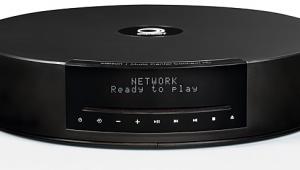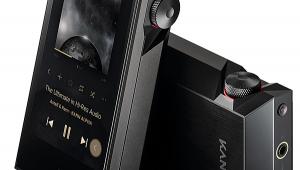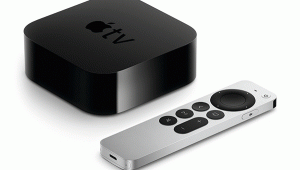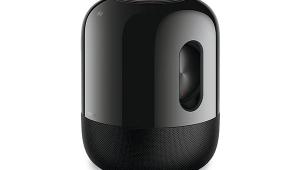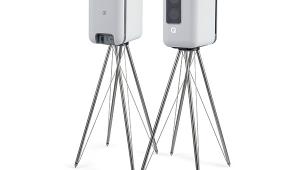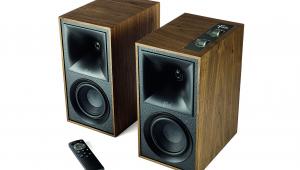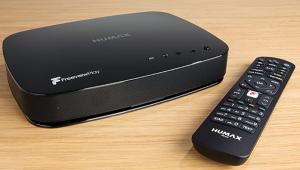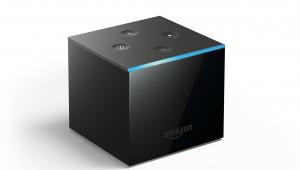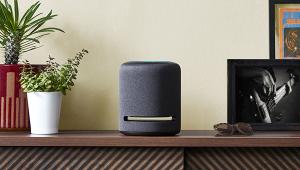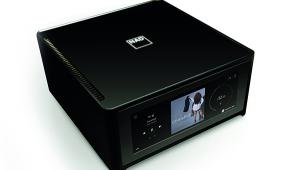Nanoleaf Lines Lighting Kit
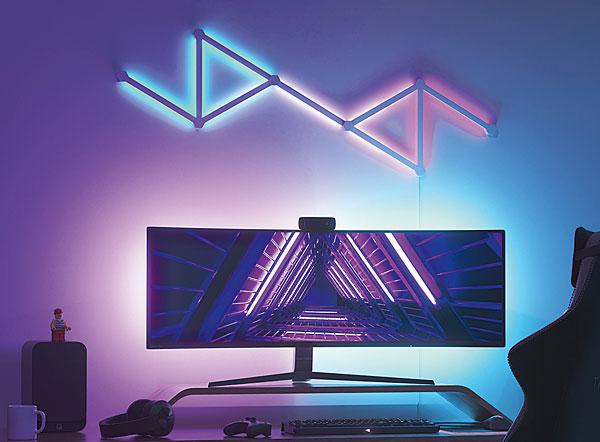
 The smart illumination brand's newest invention is its most appealing yet, says Mark Craven
The smart illumination brand's newest invention is its most appealing yet, says Mark Craven
It wasn't that long ago that the options for upgrading the lighting in your living room or movie den were a) buy more lamps, b) get a dimmer switch or c) re-wire for a complete overhaul. These days, thankfully, you can do so much more, with Wi-Fi networking and app control bringing creativity and customisation. And a smart lighting setup needn't have you calling in an electrician, either.
Nanoleaf is a company that formed in 2012 with the self-avowed ambition to 'shake up' the world of domestic lighting. Its first product was the NanoLight, a high-brightness yet energy-efficient bulb using multiple LEDs. It has since developed a slate of architectural lighting solutions using flat LED-lit panels in various shapes (such as the Canvas squares, see HCC #308), and added app-based setup and control, plus integration with numerous smart platforms. It also still sells LED bulbs and strips, all able to group in a Nanoleaf system.
Lines is the company's latest wheeze, and its most attractive yet. It offers all the feature skills of earlier panels but in a slimmer design that widens the scope for funky installations and feels less ...well, in your face.
In the £179 starter kit you get nine Lines. Measuring around 28cm long, these mount tiny wall-facing LEDs – creating a diffuse glow – behind a matte white skin (pink and black skins are optional extras). Contact points at both ends allow them to click into hexagonal connectors. These connectors have an adhesive backing, so the Lines can be added to your wall without knocking holes, but they could also mount onto screwheads.
One connector doubles as the controller. This has buttons – useful if your smart device isn't nearby – for on/off, music visualiser mode and scene mode, plus a socket to fit the supplied mains power cable, a slim white wire that incorporates a fairly unobstrusive processor/networking box (using 2.4GHz).
How you assemble the Lines is up to you. You start with the controller connector and branch out from there. At the most basic, you could build a straight line. Or you might fancy a star pattern, a run of triangles or something random. The Nanoleaf app has a design tool where you can work out shapes, plus a gallery of ideas. Some of these require more than the nine Lines you get with the starter kit; expansion packs (of three) are available for £50. Note, however, that a system exceeding 18 Lines will need an additional power supply.
I quickly assembled a shape that looked a little like the Millennium Falcon, and found the build process a lot slicker than that of Nanoleaf's Canvas. My previous experience with those panels was also that the control app was a bit buggy and not particularly intuitive. I'm glad to report the software now appears far more stable, with my Lines installation responsive to controls.
I experienced one connection dropout during a two-week period, right after I'd added the lighting to a Google Home network – powering off, then on, and giving Nanoleaf's app a few minutes, did the trick.
It's still not the easiest system to jump straight into, however, partly because there's quite a lot you can do, and partly because the onscreen layout is a little clunky. So budget for time to familiarise yourself.
Standard lighting tricks include setting different colours, colour temperatures and adjusting brightness. Then there are scenes, which set your Lines layout off in various changing hues. For example, Cozy Blaze creates a flickering fire effect, while Neon Dreams transitions between blue, green and purple. Each Line has two LED zones, which increases the potential for subtlety. There are also various music scenes, where the Lines respond to environmental sounds.
In addition to preset scenes, you can download many more, some created by Nanoleaf, others by Nanoleaf users. You can also create you own, using the app. There's potential here to get really creative, perhaps setting the individual Lines in your array to pulse different hues in a sequence. It's quite a time-consuming process, however.
Imagine That
My finished setup looked oh-so-cool, was easy to control via app or voice (although the latter is never foolproof), and I could always find a scene to suit my needs. Quickly, I found myself imagining what else I could do with more Lines, maybe a couple of bulbs, some LED strips behind my TV...
Such a setup would get expensive, and the Lines starter kit itself is hardly cheap. But you're in the mood for some mood lighting, Nanoleaf deserves your attention.
HCC Verdict
Nanoleaf Lines
Price: £180 (starter kit)
www.nanoleaf.me
We say: Easy to fit and offering plenty of scope for creativity, these slim LED wands are a smart (but not cheap) way to pimp your room.
Overall: 4/5
Specifications
App control: Yes (Android/iOS), plus desktop app (Windows/Mac) Voice control: Yes. Amazon Alexa; Google Assistant; Apple Siri DIMENSIONS (excl Connectors): 278(w) x 20(h) x 8(d)mm WEIGHT: 39g
FEATURES: 25,000-hour rated LED life; Wi-Fi (2.4GHz); Music Sync; Screen Mirror; scene customisation; layout assistant; expansion packs; Apple HomeKit, Amazon Alexa, Google Assistant, IFTTT, SmartThings, Razer Chroma integration; two colour zones per Line; 1,200K-6,500K colour temperature
 |
Home Cinema Choice #351 is on sale now, featuring: Samsung S95D flagship OLED TV; Ascendo loudspeakers; Pioneer VSA-LX805 AV receiver; UST projector roundup; 2024’s summer movies; Conan 4K; and more
|





